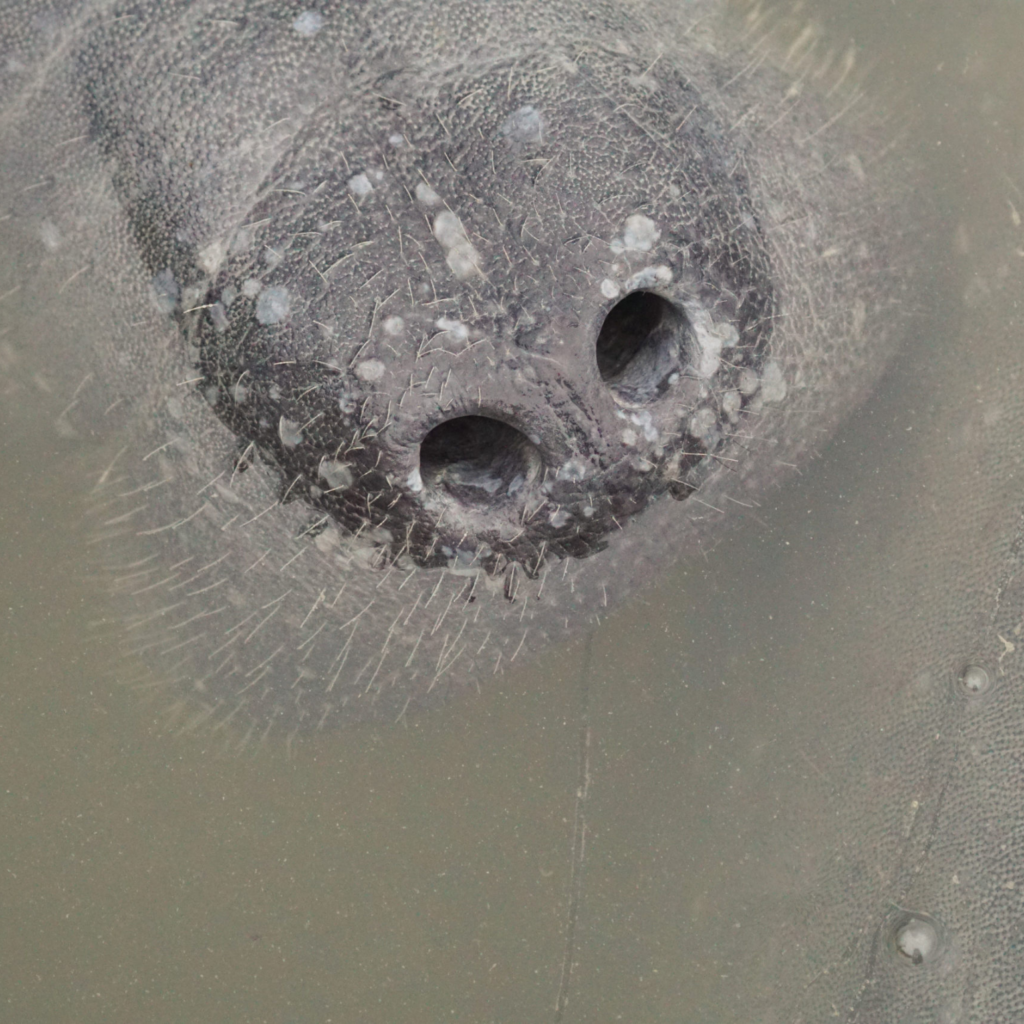Manatees are simply endearing; they are truly the gentle roly-polys of the sea. What’s not to love about a charming manatee? I know I’ve enjoyed observing them in the wild both in Everglades National Park and Crystal River, Florida.
At first glance, they might seem like simple grey swimming masses, but manatees have some fascinating secrets to share! Here are four mind-blowing facts you didn’t know about the lovable manatee.

Manatee Mowers
Manatees have quite the appetite for seagrass! These strict vegetarians munch for almost half the day to sustain their massive 1,000-pound bodies. On average they will graze and digest over 100 pounds of aquatic greens every day, that’s about 10% of their body weight. That’s the equivalent of me eating 17 pounds of salad each day to survive!

Hot Tub Habitat
Manatees might look plump and insulated, but most of their size is taken up by their stomach and intestines. Manatees lack the fat to properly insulate against the cold. Instead, they have to stick to waters that are 60 degrees Fahrenheit or warmer. During colder months they congregate near hot springs (like in Crystal River, Florida) or even stay toasty warm from the water outputs of power plants.

Stocky Neck
Unlike most mammals, manatees lack a seventh neck vertebrae. Having only six bones in their neck means they cannot turn their heads. Instead, to properly look around they must turn their whole body to see what’s going on behind or to the side of them.
Brains About It
Manatees have the lowest brain-to-body ratio of any mammal. While they might not be as clever as others, their senses are very advanced. Manatees are extremely sensitive to touch, have impressive underwater hearing, and their tiny eyes have surprisingly acute vision.

Pearly Whites
Manatees don’t have a lot of teeth, but the few molars they depend on are found deep inside their mouths. Like their elephant relatives, manatees continuously replace their teeth throughout their lives. As the old teeth wear down and fall out, new molars grow in the back of their mouths and slowly push the rest of the teeth forward. This is why manatee teeth are known as “marching molars”.







